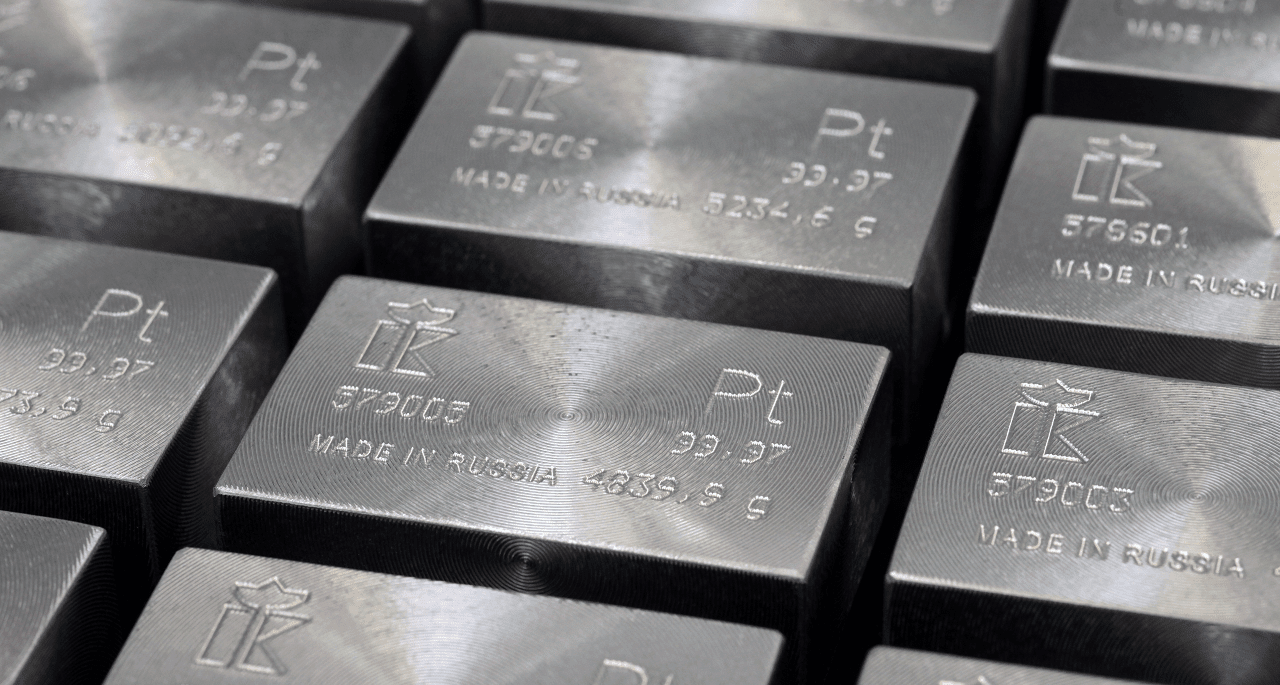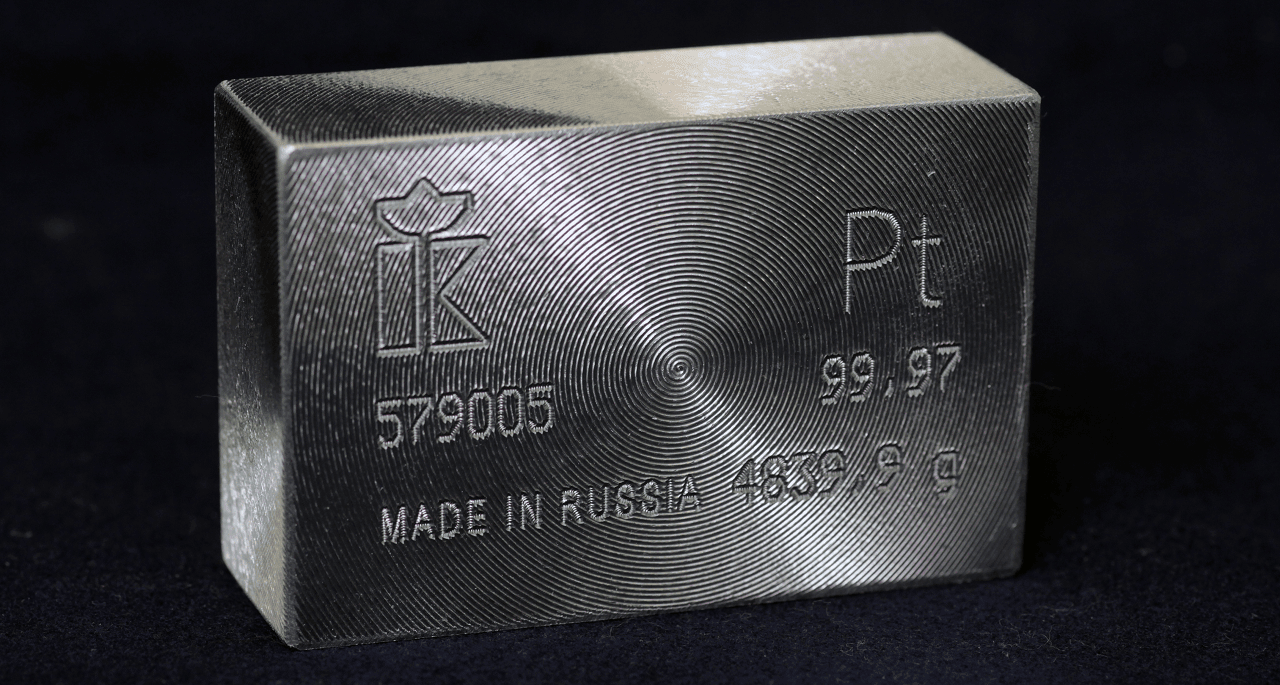Platinum (Pt)
Key trends in the platinum market
Refined metal output including production from third-party feedstock and production from own feedstock by third parties under tolling agreements.
The platinum price started rising early in the year, hitting a six-year high of over USD 1,300/oz in mid-February in anticipation of automotive market growth and amid the growing prominence of the emerging hydrogen agenda. This was followed by price correction towards the USD
In 2021, average LBMA platinum price grew 23% y-o-y to USD 1,090/oz, much faster than gold, another precious metal with a high investment component. The latter grew by 2% over 2021. The average annual spread between gold and platinum narrowed from 2:1 in 2020 to 1.6:1 in 2021, indicating that investors consider platinum’s fundamentals to be more attractive as a metal used in green economy sectors.
- Industrial incidents in Norilsk.
- The highest level of net long speculative positions in 2021.
- Revision of the Company’s production guidance due to incidents in Norilsk.
- Vehicle sales in the EU plummet by over 20% amid a shortage of vehicles available for purchase.
- The lowest level of net long speculative positions in 2021.
- Anglo American Platinum’s production report shows accelerated processing of work-in-progress inventories in 2020.
- Stabilisation due to high inflation.
Despite demand recovery, the platinum market surplus increased in 2021 due to a temporary increase in South African production caused by processing of previously accumulated work-in-progress inventory and investor outflows from ETF funds.
| Production and consumption balance | 30 |
| Outflows from ETFs | -7 |
| Change in other inventories (retail investments) | 11 |
| Supply and demand balance | 26 |
Industrial consumption of platinum in 2021 increased by 27 tonnes (+14%) y-o-y to 224 tonnes.
The automotive industry — is the largest consumer of platinum. Over 30% of platinum in this industry is used to manufacture exhaust gas catalysts for diesel vehicles.
In 2021, platinum consumption by the automotive sector increased substantially (+11 tonnes y-o-y). The increase was driven primarily by the introduction of a new, more stringent environmental standard for trucks (mostly diesel-powered) in China, which led to a significant increase in platinum loadings per vehicle for trucks in China. Global vehicle production recovery after the COVID-19 lockdown also contributed to higher platinum consumption.
We also saw the continued tightening of environmental regulation of road transport in the US, and a new, more stringent European standard Euro-7 is expected to be announced in 2022 and implemented in 2025.
At the same time, demand for platinum from the automotive industry is negatively affected by the gradual decline in diesel vehicle share of European sales (from 35.1% at the end of 2020 to 21.4% at the end of 2021). Diesel cars are outcompeted by hybrid (petrol) and all-electric vehicles. Furthermore, platinum consumption recovery was slowed by a 2% y-o-y decline in global production of light diesel vehicles due to stricter regulation in the European Union, the US and China. The decline was particularly prominent in Europe at 19% y-o-y.
The jewellery industry — is the second largest platinum consumer, accounting for a third of demand for this metal. In 2021, jewellers’ demand for platinum rose by 5 tonnes amid a rebound in demand, store reopenings and a resurgence in trade, with growth led by the US market.
The chemical and petrochemical industries also increased their platinum consumption by 2 tonnes in 2021 on the back of increased usage of platinum catalysts for paraxylene and silicone production in China, as well as growth in oil refining and new gas-to-liquids capacity additions.
In the glass industry, platinum is used to manufacture equipment (bushings) for making glass and optical fibre and optical glass. Demand for the metal from this industry grew by 4 tonnes in 2021 on the back of increased demand for LCD panels and the substitution of rhodium for platinum in the production of bushings for price reasons.
Platinum consumption in the electronics industry, where it is mainly used to produce hard drives for data storage, remained unchanged amid disruptions to operations in Malaysia and other Southeast Asian countries and competition from SSD storage.
Investments. Platinum is widely used as an investment instrument. Physical investments may vary from coins and small bars to investments in physical platinum ETFs. In 2021, demand for platinum bars from retail buyers fell by 7 tonnes to 11 tonnes. Over the year, investments in platinum ETFs also slipped by 7 tonnes. Lower investor interest may be due to profit taking amid a significant increase in metal prices in 2021.
Global production of primary refined platinum grew by 49 tonnes y-o-y to 201 tonnes in 2021.
In the reporting period, South Africa, the key producer of platinum, increased output by 53 tonnes through selling of work-in-progress inventories accumulated in 2020 and steady growth in primary production following employee vaccination and return of mines and processing plants to normal operations.
Platinum production in the Russian Federation decreased by 2 tonnes due to a temporary shutdown of the Oktyabrsky and Taimyrsky Mines flooded by groundwater and suspension of operations at the Norilsk Concentrator. Production in Zimbabwe remained at the 2020 level, while North American production fell by 2 tonnes.
Spent exhaust gas catalysts and jewellery scrap are the key sources of recycled platinum. Secondary production was flat at 53 tonnes in 2021.


